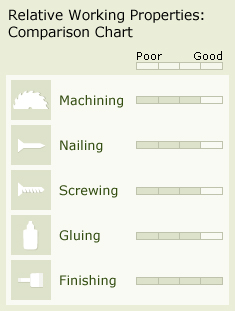
Ash (Fraxinus spp.)

Ash (Fraxinus spp.) is composed of 40 to 70 species, native to Central and North America. All species look alike microscopically. The name fraxinus is the classical Latin name for ash.
Grades Available: #1 Face White/Btr Fas/1Face, Natural Fas/1Face, #1 Common, #2 Common
Sizes Available: 4/4, 8/4
The Tree: Ashes are trees or shrubs with large, opposite, pinnately compound leaves. The compound leaves have 2 to 11 leaflets. The flowers can be bisexual or there can be distinct male and female flowers on separate trees. The flowers have no petals and the fruits are dry with a flattened wing. The tree can reach heights of 80 ft with straight boles.

General Wood Characteristics: The sapwood of ash is light brown, while the heartwood is brown to grayish brown. White ash has lighter heartwood than do the other commercial species. The width of the sapwood is 3 to 6 inches. It is ring porous, with the latewood being composed of parenchyma which surrounds and unites the latewood pores in tangential bands. The wood has no characteristic odor or taste.
Working Properties: Ash is straight grained, heavy, hard, strong and stiff; it wears smooth, with high shock resistance. It machines well and is better than average in nail- and screw- holding capacity. It glues moderately well. Ashes also split easier, shrink more, are average in workability, and perform more poorly in service compared to other native hardwoods.
Durability: Rated as slightly or nonresistant to heartwood decay.
Uses: Handle stock, baseball bats, unupholstered furniture, flooring, millwork, hand tools, sporting goods, boxes and crates.

